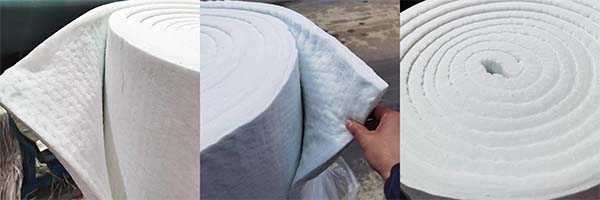1260 ℃ Ceramic fiber blanket Ceramic fiber is made of high-purity alumina (Al₂O₃) and silicon dioxide (SiO₂) as raw materials. After high-temperature melting, it is spun or blown into fibers, and then formed into a cotton-like structure through a needle-punching process. The long-term use temperature can reach 1000℃, and the instantaneous temperature resistance is 1260℃.
1260 ℃ Ceramic fiber blanket Ceramic fiber is made of high-purity alumina (Al₂O₃) and silicon dioxide (SiO₂) as raw materials. After high-temperature melting, it is spun or blown into fibers, and then formed into a cotton-like structure through a needle-punching process. The long-term use temperature can reach 1000℃, and the instantaneous temperature resistance is 1260℃.
Application scenarios
Petrochemical industry: High-temperature construction of chemical pipelines
Electric power equipment: Gas turbine and boiler insulation to improve thermal efficiency.
Metallurgical industry: Used for lining of smelting furnaces and heating furnaces to reduce heat loss.
| Features | Ceramic wool roll | Rock wool roll | Glass wool roll |
| Temperature resistance limit | 1400℃ | 700℃ | 450℃ |
| Thermal conductivity | 0.03-0.05 W/(m·K) | 0.04-0.06 W/(m·K) | 0.032-0.044 W/(m·K) |
| Applicable environment | High temperature and corrosive environment | Medium and low temperature building insulation | Low temperature air conditioning pipes |
| Environmental protection | Non-biodegradable | Partially contains slag balls | May release trace amounts of VOC |
Ceramic fiber rolls have become the preferred material for industrial high temperature protection due to their superior high temperature resistance and heat insulation performance. They are easy to construct and install. When using them, you need to reasonably choose different temperature-resistant types according to specific working conditions.
